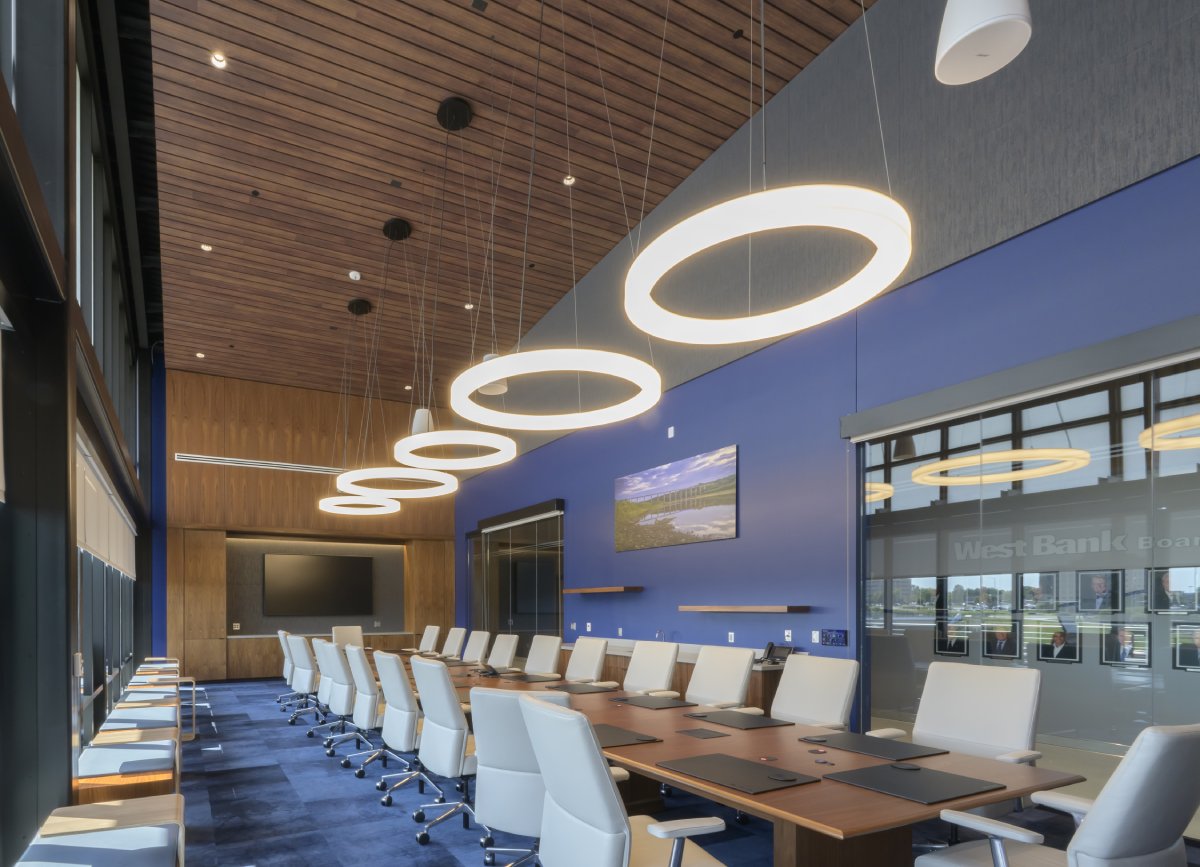
Top 10 Principles of Architectural Material Selection: Choosing the Right Surface for Every Space
Architecture is only as good as the materials that finish it. A curated, intentional architectural material selection has an enormous impact on a space’s look, sound, feel and functionality. The right surfaces affect everything from acoustics in a school auditorium to waterproofing on a rooftop terrace to a color scheme for an office. Every design choice can make the difference between a building that’s “okay” to one that’s breathtaking.
The challenge is, how do you decide for a high-traffic hospital hallway, LEED office, or rooftop lounge with a 360-degree view?
Architects turn to time-tested architectural material selection principles that drive their decision making. Informed, thoughtful decisions include criteria such as performance, sustainability, acoustics, usability, and more.
In this guide, we’ll cover 10 essential principles architects use when selecting the best surface for any space. In each section, we’ll include examples of wall and ceiling surface choices, as well as rooftop paver systems that show how the right material choices can create smarter, more resilient environments.
1. Function First: Understand the Purpose of the Space
The first step in choosing materials for architecture is understanding the space’s purpose. For instance, a surface that works great for a hotel lobby probably does not work for a hospital operating room.
For example, a classroom may need sound absorbing indoor acoustic panels to improve the acoustics. Rooftop lounge seating areas, meanwhile, need UV resistance, drainage, and have their low surface temperature requirements met. Architects meet these needs with special rooftop paver options such as porcelain or wood on pedestals.
Acoustic Solutions by Room Type
| Space Type | Acoustic Priority | Recommended Surface |
| Classroom | Clarity, absorption | StrandTec or microperf ceiling tiles |
| Hospital | Quiet, hygiene | PET panels, antimicrobial tiles, Microperf metal wall or ceiling panels |
| Auditorium | Sound quality | Diffusers, wood veneer panels |
| Rooftop | Weatherproofing | Porcelain or wood pavers on a pedestal |
2. Acoustics Matter More Than You Think
Acoustic surface materials are foundational to a room’s acoustics, yet many overlook the subject. More importantly, there’s a key difference between soundproofing (blocking sound) and acoustic treatment (shaping sound).
Acoustic treatments like wood fiber panels, absorber clouds, soft cotton grille or linear backers or microperf baffles, for example, help to manage echo and lower noise distraction. The right acoustic products are critical to the interior surface design of schools, offices, healthcare spaces, and open concept spaces where noise control, acoustic treatment, and wellness are inextricably linked.
Explore ASI’s acoustic cloud panels and cube panels for ceiling options that improve acoustics and flexibility without sacrificing aesthetics.
3. Context is Everything: Location & Climate Considerations
The environment where a building lives heavily influences building material selection. For instance:
- Coastal areas have salty air that rusts metals
- Humid environments cause wood to swell and warp
- Urban areas may need pollution-resistant or anti-graffiti coatings
For exterior spaces, waterproof roof material and UV-resistant finishes are essential. Consider porcelain pavers or modular pedestal systems designed to handle heavy rainfall and direct sunlight without degrading. These roof surfaces protect the building integrity and occupant safety. For effective rooftop design considerations, think about load-bearing capacity, water drainage, wind uplift resistance, and material heat retention. Climate resilience and environmental compatibility should be top priorities in any rooftop or outdoor material decision. A mismatch between material properties and local conditions can lead to premature failure, costly repairs, and safety hazards.
4. Form Meets Finish: Surface Texture & Design Aesthetics
For interior surface design, architectural material selection is also about material finish and texture. Tactile materials like felt or wood evoke comfort, while the visual surface finish sets the mood of a space. Consider the following:
- A wood veneer panel evokes natural warmth and sophistication, making it a great choice for hospitality spaces or education environments.
- A high-gloss metal coffer ceiling is perfect for contemporary and modern interiors like tech offices or art galleries. Learn more about this ceiling solution on the ASI coffer ceilings page.
Finishing options also impact lighting, perception of space, and even maintenance requirements. Architects collaborate with designers to ensure their material palette aligns with the overall design narrative. Even small surface choices can influence how occupants engage with and move through a space. Texture, sheen, and tone all play a role in shaping the emotional and functional experience of an interior.
5. Sustainability & Certification Goals
Demand for sustainable and green building materials is increasing, making architects look for surfaces that will allow a building to meet LEED, WELL, and other green building certifications. Specify sustainable, low-emission, and recyclable materials to achieve a LEED certified building to help with efficiency and cost-saving objectives.
Examples of sustainable architectural materials include:
- Recycled content (recycled cotton grille or linear backer)
- Low-VOC finishes
- Durable products with a long lifecycle
ASI’s StrandTec panels are made from wood fiber and meet rigorous sustainability and acoustic performance standards.
Aligning with LEED-certified and WELL-certified goals isn’t just good for the planet. It can also lead to operational cost savings, healthier buildings, and a positive brand image.
6. Integration with MEP, Lighting & Technology
Architecture today is integrated. Architects specify high-performance materials to support MEP, lighting, and technology. Ceiling and wall systems with perforations or a modular grid allow easy access to wires, air vents, or sprinkler heads while maintaining clean lines and design integrity. Take ASI’s cloud panels with integrated lighting or our beam panels that can double up as an acoustic element as well as aesthetic statement. Our beam systems seamlessly integrate architectural surface design and high-performance technology. This convergence of form and function ensures that buildings are not only beautiful but also efficient and future-ready. As demands for smart, connected environments grow, integrated material solutions will play an increasingly vital role in modern design.
7. Durability & Maintenance Requirements
Durability isn’t just about lasting longer. It’s about matching performance with the right demands of a space.
- Hospitals require hygienic, cleanable, and sanitized surfaces
- Schools need impact-resistant, graffiti-proof panels to lower maintenance
- For rooftops, consider concrete pavers, porcelain tiles, or untreated wood
For long-term, consistently beautiful results, architects rely on building code compliant materials that meet industry standards and have proven resistance to wear and tear. Specifying the right materials from the start can reduce repair costs, minimize downtime, and extend the lifecycle of a space. Ultimately, durable materials help protect both the integrity of the design and the investment behind it.
8. Occupant Comfort & Experience
Great architecture is human-centered. The right material choices can influence occupant comfort by sound, touch, and sight. For instance:
- Soft-touch wall panels make play areas more approachable and safer
- Acoustic ceilings lower ambient noise, aiding focus and performance
- Tactile materials contribute to wayfinding and sensory inclusion
Think of acoustical design as an early architectural design element, rather than an afterthought. From baffles for reducing noise to products like ASI baffle ceilings that reduce reverberation, both contribute to an engaging, human-centered design that balances form and function perfectly.
9. Accessibility & Code Compliance
Material choices, of course, also have to support the accessibility and safety of occupants. ADA compliant surfaces are a primary consideration for any public building. Surfaces must have slip resistance, slope, and transitions to support a safe occupant experience for people with mobility devices. This includes:
- Slip-resistant flooring
- Tactile indicators
- Level transitions (especially rooftops or exterior deck areas)
An example of this is a pedestal paver system that allows for completely level rooftop surfaces, which is key for wheelchair users.
Tactile surface selection also supports visually impaired people who use mobility devices and need to navigate a space with confidence and safety.
10. Cohesiveness with Design Language
Finally, every surface has to play into a space’s overall story. Material selection is its own design language, a set of tools for visually expressing brand, culture, function, and emotion.
As architect Prashant Parmar eloquently explains in his design philosophy, every material and element should visually and materially harmonize to tell the space’s desired identity. Whether it’s industrial, biophilic, minimal, eclectic or something else, it must fit together cohesively. Use a surface material comparison matrix to help you align textures, tones, and finishes across spaces. An architectural material comparison matrix ensures that architectural materials don’t clash, but rather, contribute to a seamless spatial narrative. It encourages intentionality, making sure each design choice supports the overall vision. When thoughtfully applied, materials finish a space and define its story, mood, and impact.
Materials Make the Space
Smart architectural material selection is more than a checklist. It’s a strategic design decision that impacts every layer of a project. From acoustics to ADA compliance, climate resilience to design language, the right surface transforms every space. It’s not about following trends. It’s about asking the right questions. How will this surface perform? How will it feel for occupants? Will it age well? Does it support the overall sustainability goals of the project?
Whether you’re working on a high-end hotel, a public school, or a rooftop garden, ASI Architectural has a complete portfolio of acoustic surface materials, ceiling solutions, and panels that meet the highest standards of acoustic performance and aesthetics. From linear ceilings to microperf metal panels to cube panels, we’ve got them all. Make your next project a showcase of thoughtful and intelligent design. Because with the right materials, every space tells a stronger story.








